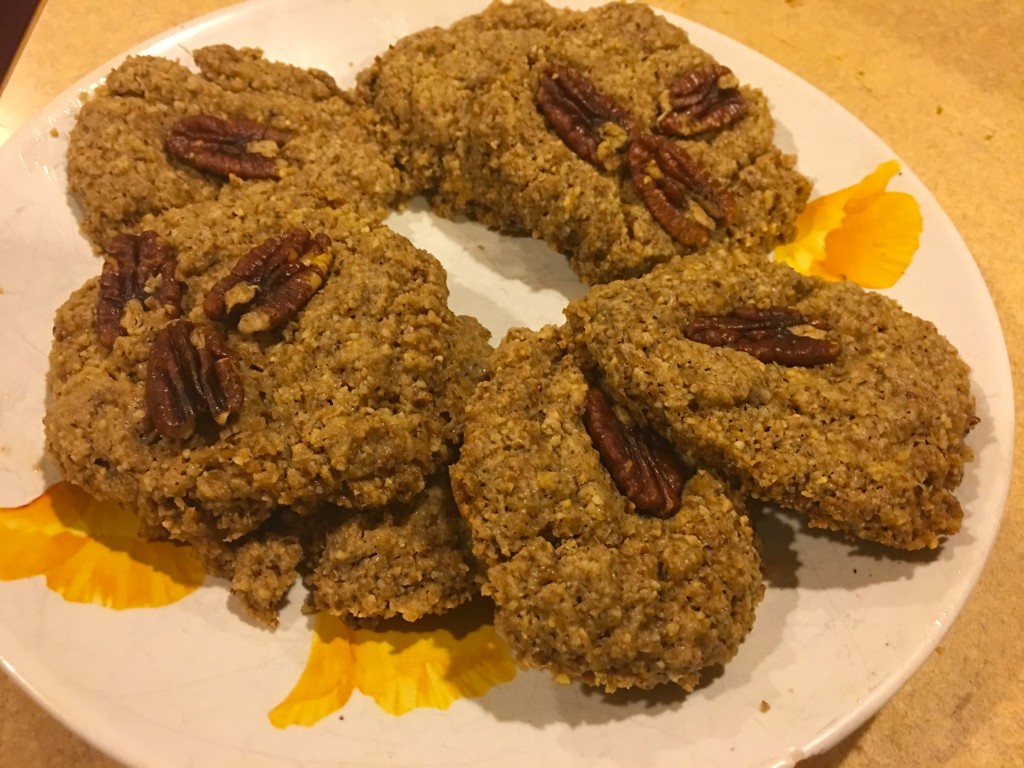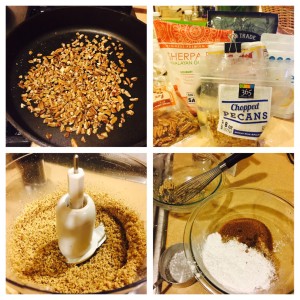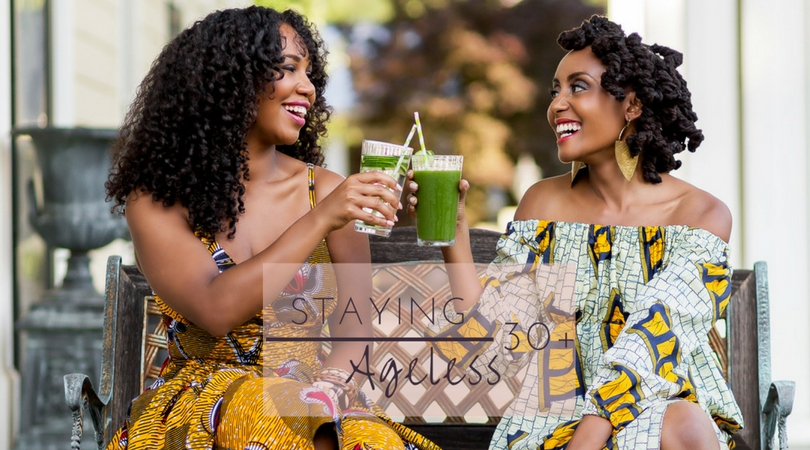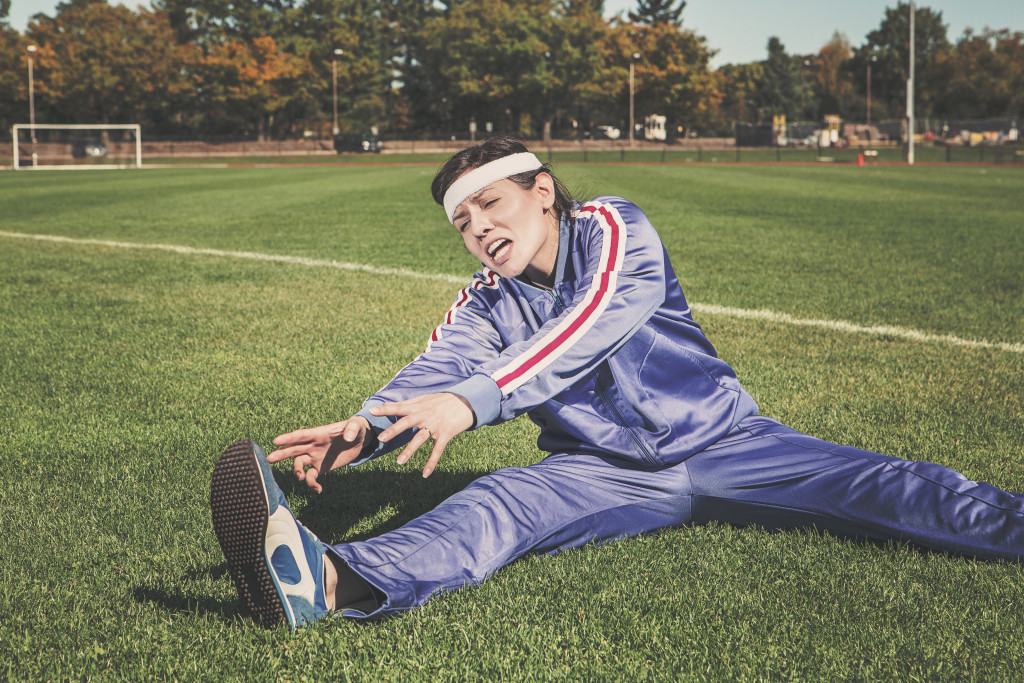Tags
acne aging anti-aging beauty detox diet exercise fasting healing health healthy lifestyle healthy living healthy recipes inspiration juicing Living la Vida Raw meditation mindfulness Move Your Body Natural Beauty natural cures Natural Cures natural remedies nutrition nutritionist parasites raw raw food Raw Food for Thought raw foods raw girl Raw News raw recipes Raw Spirit Recipes skin spirulina stress vegan vegan lifestyle vegan recipes vegetarian Veggie Love wellness yogaNewsletter Sign-up
Tag Archives: healthy living
All New One-on-One Coaching!
I have some news. Awhile back I stopped taking clients one-on-one. Being in school, soaking up incredible knowledge about nutrition and the human body has been my focus the last couple years. Super excited that in a few short months, your girl will be a full-fledged Holistic Nutritionist! That’s right! Woop Woop!
I have learned a heck of a lot and I am looking forward to sharing that knowledge to help you heal, transition, or simply live your best life. In order to ease into the transition I have re-launched my one-on-one sessions via Skype or in-person at my new office. YES! I have an office. Really happy to be joining forces with the Wellness Cooperative in Alexandria, VA, to take nutrition clients starting April 1st. The office is located at 309 S. Washington Street in Old Town Alexandria, and they offer a range of services including massage, facials, and acupuncture.
I will be offering holistic nutrition sessions to help you transform your health. If you want an in-depth check-up to see what deficiencies you may have, how you can increase your energy, or use nutrition and lifestyle to relieve stress, heal from a medical diagnosis, or even lose weight, we are on the same page lady. I’m also including sessions geared towards transitioning to VEG and will be adding in some consultations designed to help those struggling with breakouts, acne, or problem skin. My goal is to leave you with the information and tools to achieve real results. Are you ready to transform your health? Check out some of the testimonials I have received thus far about my consultations. More to come! -XO
Services (click to learn more):
Transform Your Health Nutrition Tune-Ups
Jumpstart into a Plant-Based Diet
How Kudzu Can Help Curb Binge Drinking
 Did you know that 56% of adults age 18–44, are current regular drinkers, and thirty percent of current drinkers report drinking excessively? (Naimi et al., 2003; Schiller et al., 2012). Although drinking alcohol is very normalized in our society, alcohol can be toxic to the body especially when abused. In 2013, one study asserted that consuming excessive alcohol is actual the leading cause of illness worldwide, (Shield et al., 2013). Generally, when we think about seeking help or rehabilitation from excessive drinking we do not immediately think of herbs or supplements. However, amazingly enough, the Japanese herb kudzu has been used to treat drunkenness and alcoholism since 600 A.D. and has modern day research to back up its’ effectiveness.
Did you know that 56% of adults age 18–44, are current regular drinkers, and thirty percent of current drinkers report drinking excessively? (Naimi et al., 2003; Schiller et al., 2012). Although drinking alcohol is very normalized in our society, alcohol can be toxic to the body especially when abused. In 2013, one study asserted that consuming excessive alcohol is actual the leading cause of illness worldwide, (Shield et al., 2013). Generally, when we think about seeking help or rehabilitation from excessive drinking we do not immediately think of herbs or supplements. However, amazingly enough, the Japanese herb kudzu has been used to treat drunkenness and alcoholism since 600 A.D. and has modern day research to back up its’ effectiveness.
So what is kudzu? Kudzu, also known as Japanese arrowroot is a plant native to Eastern and Southeast Asia characterized by coiling, climbing, perennial vines. Where it grows wild it is considered a weed because of its’ rapid growth rate and ability to cover trees and shrubs quickly. Kudzu was introduced to North America in 1876 to help with soil erosion, but it’s root, flower, and leaf can actually be used to make medicine. Kudzu can be used to treat excessive alcohol binge drinking, dependence, or alcoholism, along with helping to reduce common symptoms of a hangover like headaches, vomiting, or dizziness, (WebMD.com, 2018). In addition to assisting with alcohol related issues, kudzy can be used for heart or circulatory problems, chest pain, upper respiratory problems, along with skin issues such as rash or psoriasis, (WebMD.com, 2018).
There are several research studies that have been conducted that offer evidence that kudzu is an herbal remedy that should be considered when working to treat alcohol dependence. In a Harvard Medical School study, kudzu was found to decrease the desire to consume alcohol pretty rapidly; within 90 minutes of taking 1,000 mg kudzu extract capsules three times daily. Another study, conducted on 17 men who were diagnosed with alcohol dependence showed a 34-57% reduction in drinking with kudzu treatment, with effects observable by the second week of the study. “Kudzu also doubled the number of consecutive days of abstinence,” (Lukas, S., et al, 2013). In another study, “heavy” alcohol drinkers, both male and female, were treated with either placebo or a kudzu extract for 7 days and then given an opportunity to drink their preferred brand of beer. Those who received kudzu extract, had a significant reduction in number of beers they consumed, (Lukas, S. et al, 2005). Related to binge drinking, one study involving 20 individuals who consumed 15 drinks per week or had 2 or more binge drinking episodes per week were treated with 2g of kudzu extract 2.5 hours before drinking and their drinking almost reduced by half. “In Kudzu group the consumption reduced from 3.0 to 1.9 beers approximately,” (Penetar, D.M. et al, 2015).
Although more research from wider samples may be needed to verify the complete efficacy of kudzu, it’s clear that there are benefits to considering kudzu as part of alcohol dependence or binge drinking treatment. Some advantages that treating with kudzu may have include low incidence of any side effects, a milder more natural alternative to harsher medications, and it tends to produce results within a short timeframe which helps to keep motivation high during the recovery process, (Lukas, S. et al, 2013). When utilizing kudzu as treatment for alcohol dependence, the extract is generally used up to 1,000 mg three times daily for results. As with all interventions, it’s important to consult with a practitioner and address other aspects of health or nutrition to bring the body and cravings into balance. Within alcohol dependence, working with a support group or therapist can provide additional support to ensure a full and long term recovery. -XO Raw Girl
References:
Lukas, S. E., Penetar, D., Su, Z., Geaghan, T., Maywalt, M., Tracy, M., … Lee, D. Y.-W. (2013). A Standardized Kudzu Extract (NPI-031) Reduces Alcohol Consumption in Non Treatment-Seeking Male Heavy Drinkers. Psychopharmacology, 226(1), 65–73. http://doi.org/10.1007/s00213-012-2884-9
Lukas, S. E., Penetar, D., Berko, J., Vicens, L., Palmer, C., Mallya, G., . . . Lee, D. Y. (2005). An Extract of the Chinese Herbal Root Kudzu Reduces Alcohol Drinking by Heavy Drinkers in a Naturalistic Setting. Alcoholism: Clinical & Experimental Research, 29(5), 756-762. doi:10.1097/01.alc.0000163499.64347.92
Naimi TS, Brewer RD, Mokdad A, Denny C, Serdula MK, Marks JS. Binge drinking among US adults. J. Am. Med. Assoc. 2003;289:70–75.
Penetar, D. M., Toto, L. H., Lee, D. Y.-W., & Lukas, S. E. (2015). A Single Dose of Kudzu Extract Reduces Alcohol Consumption in a Binge Drinking Paradigm. Drug and Alcohol Dependence, 153, 194–200. http://doi.org/10.1016/j.drugalcdep.2015.05.025
Schiller JS, Lucas JW, Ward BW, Peregoy JA. Summary health statistics for U.S. adults: National Health Interview Survey 2010. National Center for Health Statistics. Vital Health Stat. 2012;10(252)
Shield KD, Rylett M, Gmel G, Kehoe-Chan TA, Rehm J. Global alcohol exposure estimates by country, territory and region for 2005–a contribution to the Comparative Risk Assessment for the 2010 Global Burden of Disease Study. Addiction. 2013;108:912–922.
Sun S-M. Beiji-Quianjin-Yaofang. circa 600 AD.
WebMD.com. (n.d.). KUDZU: Uses, Side Effects, Interactions and Warnings. Retrieved March 07, 2018, from https://www.webmd.com/vitamins-supplements/ingredientmono-750-kudzu.aspx?activeingredientid=750&activeingredientname=kudzu
Healthy Action of the Week: Watch What the Health
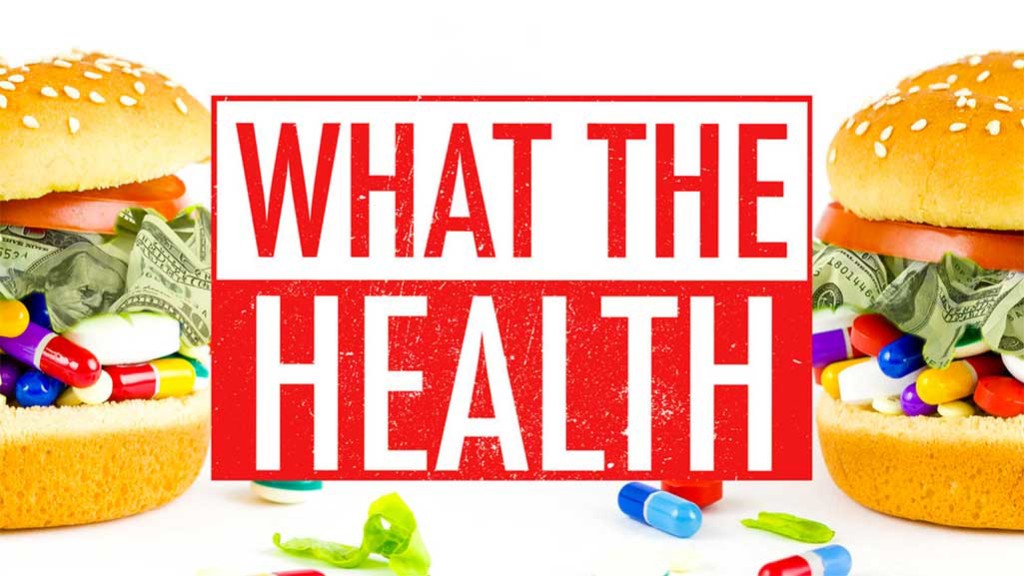 Unless you’ve been living under a rock, you may have heard a few months back about the slew of folks going vegan, or at least vowing to do so, after watching the Netflix documentary: “What the Health.” It’s an interesting documentary that has received a lot of criticism, but I believe it’s worth watching. Your healthy action of the week is to carve out some time to watch the doc. Comment below or find me on Instagram and let me know what you think! -Xo Raw Girl
Unless you’ve been living under a rock, you may have heard a few months back about the slew of folks going vegan, or at least vowing to do so, after watching the Netflix documentary: “What the Health.” It’s an interesting documentary that has received a lot of criticism, but I believe it’s worth watching. Your healthy action of the week is to carve out some time to watch the doc. Comment below or find me on Instagram and let me know what you think! -Xo Raw Girl
Recipe! Vegan Pecan Cookies
Adapted from Nourishing Traditions, by Sally Fallon and Mary Enig
Ingredients (Makes 18 cookies)
• 1 ½ cups crispy pecans
• 6 tablespoon softened butter or 6 tablespoons coconut oil
• ½ cup succanat or maple sugar
• 1 cup arrowroot power
• 1 teaspoon vanilla extract
• ½ teaspoon sea salt
• Egg Replacer: equivalent of 1 egg white
• 18 crispy pecan halves
Instructions
Preheat the oven to 300˚F.
Place the pecans in a food processor and process until finely ground. Add the remaining ingredients (except pecan halves) and process several minutes until smooth. Transfer to a bowl and stir in the egg replacer. Use two spoons to drop the cookies onto a parchment-covered cookie sheet. Press a pecan half onto each cookie. Bake at 300 degrees for about 20 minutes or until the bottoms are golden. Let cool completely before removing to an airtight container. Store in the refrigerator.
For crispy almond cookies, make them the same way, substituting 1 ½ cups almonds for the pecans and ½ cup coconut oil or softened butter for the fat measurement. Add 1 teaspoon almond extract to the ingredients as well. Press an almond into each cookie.
How Your Diet Affects Your Sleep
In Thomas Cogan’s book The Haven of Health, he discusses the connection between foods ingested and quality of sleep in his 1584 book, and makes claims that digestive “vapors” from meat, milk, and wine create good sleep. I read about this and was literally like WTF? Meat vapors will make people sleep better? Only because this was written in 1584 AD I’ll give Mr. Cogan a pass. However, the amazing nonsense that is out there sometimes is baffling. Anyone who has tried a raw vegan diet knows that actually, the cleaner your diet gets, the more your energy skyrockets and you may finding yourself needing less sleep to feel refreshed. When I go on fully raw binders for a few days I find myself jolting up at 5:30 or 6 am and running on full throttle throughout the day. So the meat vapor thing sounds cray cray to me and luckily there’s some science to back it up. Although the term “good” sleep needs further interpretation, current research does support that diet does indeed have a direct effect on sleep patterns.
In a study conducted at the University of Pennsylvania’s Perelman School of Medicine, findings published in 2013, researchers identified different associations between sleep time and the types of nutrients the participants ate. The study found that very short sleepers consumed less tap water, total carbohydrates, and a compound found in red and orange foods, compared with the others. Long sleepers consumed less of a compound found in tea and chocolate, in addition to choline, which is found in eggs and some meat. Long sleepers also consumed more alcohol. In Russell Fosters TED Talk entitled “Why do we sleep?” he sums up why alcohol shouldn’t be relied upon long term to fall asleep: “alcohol doesn’t provide a biological mimic for sleep it sedates you; so it actually harms some of the neurological processing going on during memory consolidation and memory recall.” The American Academy of Sleep Medicine conducted a study in 2016, and found that eating LESS fiber, more saturated fat and more sugar is associated with lighter, less restorative, and more disrupted sleep. Typically a good whole food plant-based diet is full of fiber, low in saturated fats, and low in refined sugar, which will make for good sleep.
It’s not uncommon for people who have improved their diets to report that they feel energized during the day and sleep better at night. According to the study at Perelman the very short and long sleepers consumed a less varietal diet than those who were considered normal sleepers. Although there is more research needed to ascertain how changing one’s diet can change sleep patterns, according to the research study entitled, “Insufficient Sleep Undermines Dietary Efforts to Reduce Adiposity,” it is clear that not getting enough sleep can decrease the proportion of weight loss as fat by at least 55%, and can promote unhealthy dietary cravings. Thomas Cogan’s original claims that meat, milk, and alcohol contribute to “good” sleep could be reinterpreted behind the lens of current research to say that in some people those substances cause longer sleep, which doesn’t necessarily equate to the highest quality of restoration. Instead it points to the fact that their bodies’ most likely need a longer period of time to restore, process, and cleanse given the kind of food they are consuming. -Xo Raw Girl
References:
American Academy of Sleep Medicine. (2016, January 14). What you eat can influence how you sleep: Daily intake of fiber, saturated fat and sugar may impact sleep quality. ScienceDaily. Retrieved August 16, 2017 from www.sciencedaily.com/releases/2016/01/160114213443.htm
Grandner, M., Jackson, N., Gerstner, J., & Knutson, K. (2013). Dietary nutrients associated with short and long sleep duration. Data from a nationally representative sample.Appetite, 71-80.
Foster, R. (Director) (2013, June 1). Why do we sleep?. TED Talk . Lecture conducted from TED Global.
Nedeitcheva, A.V., Kilkus, J.M., Imperial, J., Schoeller, D.A., & Penev, P.D. (2010). Insufficient Sleep Undermines Dietary Efforts to Reduce Adiposity. Anals Of Internal Medicine. 153(7), 435-W.163.
Have you checked out my new online classes yet? In my new course, Staying Ageless 30+ you will learn about Diet Basics, Lifestyle Factors, and elements of Longevity that promote an ageless way of life. Over the course of three modules you learn what to eliminate from your diet to stay ageless, how to ensure your body is receiving adequate nutrition, powerful detox rituals you can incorporate to increase your longevity, beauty remedies that will leave you glowing, and how to exercise effectively and get results. In addition you will learn health lessons directly from renowned longevity and health experts that will equip you to transform your lifestyle. You can still enroll! Check out the class HERE to preview the curriculum our save your seat! -Xo
Healthy Action of the Week: Check Your Body Fat Percentage
 I hate the gym y’all. No really, I do. Lately I have preferred pilates and yoga to being in a gym environment. But beginning in August, I added a weight training gym routine back into my routine. Why? I started to feel like my body needed it, and boy was I right. A couple years ago, I wrote about how a check up with a trainer shocked the heck out of me! In that session I found out that my body fat percentage was literally that of an obese person even though I am tall and lean. My percentage was above the healthy range, and at the time all I was doing for exercise was a whole lot of yoga. Learning this prompted me to get serious about adding weight training to my routine. When your body fat percentage is above the normal range it can put you at risk for cardiovascular disease, diabetes, and host of other not so pleasant conditions.
I hate the gym y’all. No really, I do. Lately I have preferred pilates and yoga to being in a gym environment. But beginning in August, I added a weight training gym routine back into my routine. Why? I started to feel like my body needed it, and boy was I right. A couple years ago, I wrote about how a check up with a trainer shocked the heck out of me! In that session I found out that my body fat percentage was literally that of an obese person even though I am tall and lean. My percentage was above the healthy range, and at the time all I was doing for exercise was a whole lot of yoga. Learning this prompted me to get serious about adding weight training to my routine. When your body fat percentage is above the normal range it can put you at risk for cardiovascular disease, diabetes, and host of other not so pleasant conditions.
Fast forward to August of this year, I popped into the gym the first week for a check up and this time, my body fat percentage was in the healthy range (YAY!) but at the high end of the healthy range (Meh.) It had lowered 3-4% points. I was happy it was normal, but determined again to see it drop further. These visits caused me to do a little more digging—-it seems that our body fat percentage can give us a little more information than even BMI about how our health is doing and potential risk for disease. This weeks healthy action is for you to find a body fat percentage scale at your local gym and find out where you stand on the spectrum. If you are high, at least you’ll be aware and able to start changing up your workout routine now to get back in the healthy range. It’s November now and I wanted to give myself three months of consistent training before my next check up. I’ll report back soon with my latest results. -Xo Raw Girl
Reframing Exercise: So You Hate to Move?
Do you hate exercise? Are you one of those people who cringes or all of a sudden feels like you need a nap when you hear the word gym? This post is for you boo! The human body is designed to move, and as you’ve probably heard exercise can not only take years off your life, but can also assist in preventing a host of diseases and reduce stress. “It would appear that cardiovascular conditioning has physiologic characteristics which would counterbalance those induced by such stress. Accordingly, it appears logical that cardiovascular conditioning by aerobic exercise techniques is an effective therapeutic tool,” (Roberston,1976). So there’s no debate you should be exercising, but since that’s a dirty word lets think about the “E” word a little differently. First off try committing to a minimum goal of 15 minutes per day of activity. Why will this help you? Well, a 2011 study published in Basic and Applied Psychology showed that: “leading individuals to mentally reframe the time required for an exercise program (e.g., 2hr per week) in terms of the equivalent daily amount (e.g., 17min per day) reduced the perceived time commitment and increased people’s willingness to try the program.” Next, in order to get in your daily time, you don’t need to be at the gym. There are a host of things you can inject into your busy route daily that can help you get a little more movement into your life. Below’s a short list of a few things you can consider. Creating group activities with your family or friends can help it feel more like fun and less like –Xo Raw Girl
- Park far away from your car and walk to the store
- Take the stairs rather than the elevator
- Buy a pedometer, track your daily steps and set goals to increase your steps weekly
- Gardening
- Playing tag or dancing around with kids
- Chores around the house
- Bike riding
- Taking a pool day and swimming
- Walking in a park
- Bike riding with your entire family
References:
Eliot, R. S., Forker, A. D., & Robertson, R. J. (1976). Aerobic exercise as a therapeutic modality in the relief of stress.Advances In Cardiology, 18(0), 231-242.
Peetz, J., Buehler, R., & Britten, K. (2011). Only Minutes a Day: Reframing Exercise Duration Affects Exercise Intentions and Behavior. Basic and Applied Social Psychology, 118-127.
Have you checked out my new online classes yet? In my new course, Staying Ageless 30+ you will learn about Diet Basics, Lifestyle Factors, and elements of Longevity that promote an ageless way of life. Over the course of three modules you learn what to eliminate from your diet to stay ageless, how to ensure your body is receiving adequate nutrition, powerful detox rituals you can incorporate to increase your longevity, beauty remedies that will leave you glowing, and how to exercise effectively and get results. In addition you will learn health lessons directly from renowned longevity and health experts that will equip you to transform your lifestyle. You can still enroll! Check out the class HERE to preview the curriculum our save your seat! -Xo
Got Mg? How Magnesium Deficiency Can Stress You Out
As the saying goes: “I’m too blessed to be stressed,” but if I don’t supplement my Mg, stress could show up at my front door anyway! Did you know deficiencies in certain nutrients can actually create stress or exacerbate the stress in your life? Crazy, huh? “Well insufficient amounts of just one mineral, magnesium, can result in anxiety, asthma, anorexia, birth defects, hardened arteries, mental disorders, hyperactivity, hypertension, hypothermia, insomnia, menstrual pain, muscle weakness, tremors, seizures, AND it’s been linked in studies to be associated with increased risk of cancer development.” There’s a past article on Mg on my site, but because it’s such an important mineral, I’m revisiting it again and including some of the same info.
Here’s the deal when it comes to stress and magnesium: lack of magnesium tends to magnify the stress reaction, which in turn creates more stress and worsens the problem. Research has shown that adrenaline and cortisol which are by-products of our “fight or flight response” when we are anxious or in danger are directly associated with decreased magnesium. The problem with stress and “fight or flight” is most often we have that response to things that are not life threatening at all. The response is meant to assist us in times of danger, but it becomes detrimental to our health if our stress levels are way up consistently for drama at work, toxic relationships, unexpected tragedy or whatever stressors may show up in our daily lives.
Moral of the story? If you want to reduce your stress levels magnesium is your new bff. Magnesium and stress relief go together like peanut butter and jelly. So it’s important to take a look at your diet and ensure you are getting in some Mg rich foods.
The RDA and UL (Tolerable Upper Limit) levels for magnesium for adults (over 18) are as follows:
| RDA | Age | Male | Female |
| 19-30 | 400 mg | 310 mg | |
| 31-50 | 420 mg | 320 mg | |
| UL | 19 + | 350 mg | 350 mg |
Mg can be helpful as a therapeutic intervention for these conditions:
- Anxiety, irritability
- Insomnia
- Muscle cramps
- Hypertension
- Cardiovascular diseases
- Diabetes mellitus
- Migraine headaches
- Asthma (as intravenous infusion for an acute attack)
Food Sources of Magnesium
Mustard greens, blackstrap molasses, turnip greens, sea vegetables, green beans and collard greens, spelt, cucumber, bell peppers, celery, kale, cantaloupe, cacao, brazil nuts, almonds, cashews and a variety of seeds, including sunflower seeds, pumpkin seeds, sesame seeds, and flaxseeds. -Xo Raw Girl
References:
Haas, E. M., & Levin, B. (2006).Staying healthy with nutrition: the complete guide to diet and nutritional medicine. Berkeley: Celestial Arts.
Ross, A. C., Caballero, B. , Cousins, R. J., Tucker, K.L. & Ziegler, T. R. (2014). Modern Nutrition in Health and Disease. (11th ed.). Baltimore, MD: Lippincott, Williams & Wilkins.
National Institutes of Health. 2016. Magnesium: Fact sheet for health care professionals. Retrieved from: https://ods.od.nih.gov/factsheets/Magnesium-HealthProfessional/
Aldrich, N. (2016). Magnesium. Retrieved from https://learn.muih.edu/courses/4673/pages/magnesium?module_item_id=108286.
Healthy Action of the Week: Get Yo Greens In!
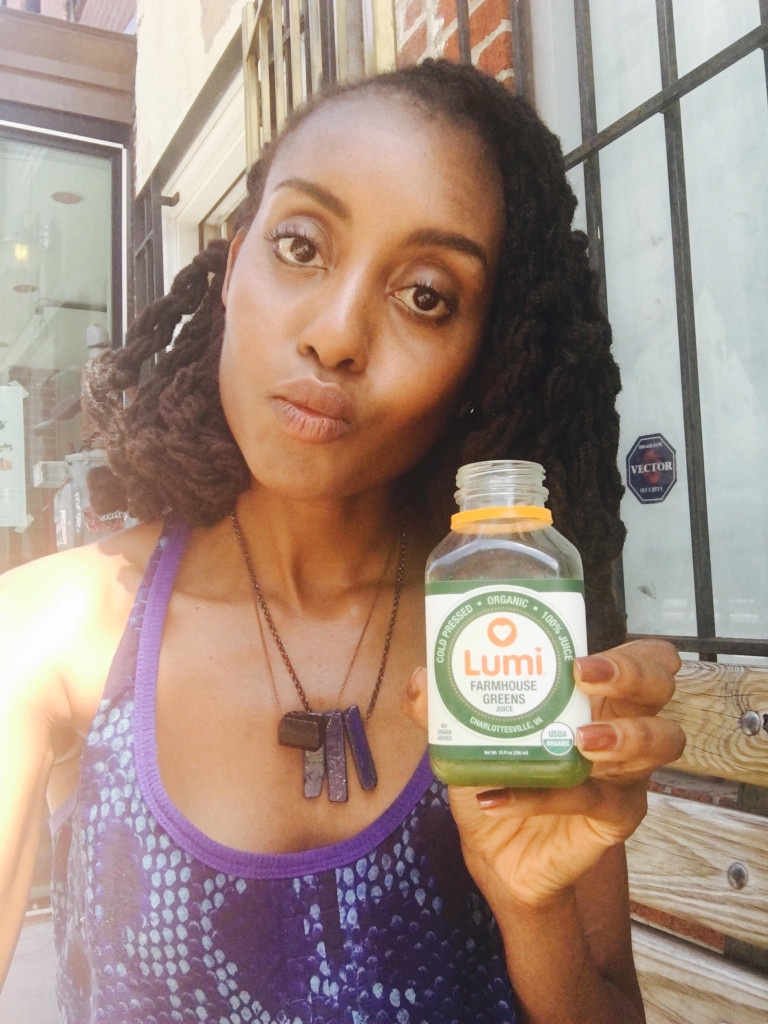 Every day this week try to incorporate fresh organic green vegetables in at least one meal. Your body will thank you. -Xo Raw Girl
Every day this week try to incorporate fresh organic green vegetables in at least one meal. Your body will thank you. -Xo Raw Girl
Some benefits of chlorophyll found in green vegetables include:
- Increases the functioning of the heart
- Improves the health and wellness of the intestines
- Cleanses the liver
- Improves the overall health of the vascular system
- Maintains healthy bones and strong muscles
- Protein. Yes! Greens have protein
- Lowers or maintain healthy blood pressure
- Helps body to detox and cleanse of impurities naturally
- Improves the quality of your skin
- Can increase the quality and quantity of your red blood cells because the compound has a chemical composition very similar to hemoglobin
- Can lower your risk for developing certain types of cancer
***Warning: eating a larger amount of green vegetables may accelerate healing or cause an increase in joie de vivre, sexiness, youthfulness, and overall magnetism. Heed this advice at your own risk.****
The Skinny on B Vitamins
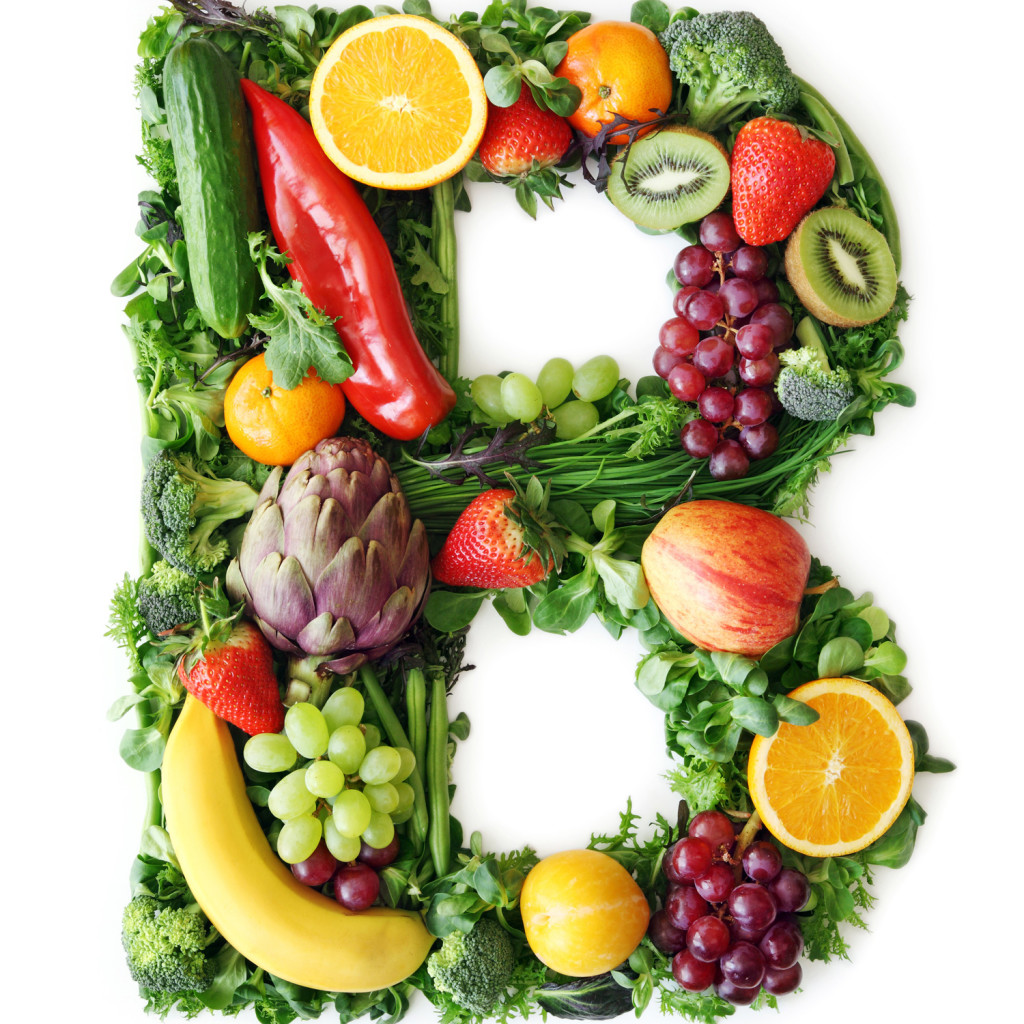 We’ve all heard about RDA or recommended daily allowance for vitamins and minerals that are set by the Food and Drug Nutrition Board and give us the estimated minimal amount that people need to consume in order to avoid deficiencies. However, the optimal level of consumption of any micronutrient should actually fall well above the RDA for maintaining adequate nutrition and optimal health. B vitamins in particular can be consumed several times more than the RDA. When it comes to the optimal level, it’s an amount that can be consumed in order to allow for the nutrient to provide proper functioning while now allowing symptoms of toxicity to develop or any adverse symptoms. B-vitamins are essential for the metabolism of glucose, act as co-enzymes in mitochondrial aerobic respiration, and are instrumental in cellular energy production and the production of ATP (basically the process of turning our food into energy).
We’ve all heard about RDA or recommended daily allowance for vitamins and minerals that are set by the Food and Drug Nutrition Board and give us the estimated minimal amount that people need to consume in order to avoid deficiencies. However, the optimal level of consumption of any micronutrient should actually fall well above the RDA for maintaining adequate nutrition and optimal health. B vitamins in particular can be consumed several times more than the RDA. When it comes to the optimal level, it’s an amount that can be consumed in order to allow for the nutrient to provide proper functioning while now allowing symptoms of toxicity to develop or any adverse symptoms. B-vitamins are essential for the metabolism of glucose, act as co-enzymes in mitochondrial aerobic respiration, and are instrumental in cellular energy production and the production of ATP (basically the process of turning our food into energy).
How B vitamins get to the brain?
The B vitamins for brain function are actively transported across the blood barrier by dedicated transport mechanisms. Cellular uptake mechanisms dictate the distribution of where all the B vitamins are allocate once in the brain. Following that B vitamin levels are controlled by several homeostatic mechanisms which guarantee that brain concentrations remain comparatively high. Much of the evidence related to the impact of B vitamins on the brain has not been consistent. Some studies suggest that B vitamins do have significant benefits to brain function.
The pentose phosphate pathway is a necessary step in the synthesis of fatty acids, steroids, nucleic acids and the aromatic amino acid precursors to a range of neurotransmitters and other bioactive compounds essential for brain function. In essence B vitamins will help keep our thinking sharp and keep us from going cray cray. Thiamine is a coenzyme in that pathway and acts as a cofactor during metabolic processes and contributes to the structure and function of cellular membranes.
Why you care? Although B vitamins are totally essential, prevalence of B vitamin deficiencies has increased in developed societies. Figures calculated for RDA and other nutritional requirements have barely changed over the past four decades despite glaring facts that point to the decreasing ability to absorb nutrients from our food and soil. Studies have found that populations in developed countries such as the U.S. do not consume the RDA of B vitamins. As obesity continues to climb there is a clear relationship between obesity and malnutrition because the SAD (Standard American Diet) consists of too much high fat, sugary, processed or fast foods which have little to no nutrition in the form of vitamins and mineral. Large portions of developed populations have been shown by studies to have biochemical levels of B vitamins that could cause deficiency related diseases, or reaching levels considered “marginal deficiency” which isn’t completed deprived but still not optimal either. All of these factors are a part of why deficiencies in developed societies occur.
Supplementation
Studies have shown that supplements higher in B vitamins and lower in other micronutrients have stronger effects than supplements with lower levels of B vitamins and higher concentrations of other micronutrients. So it may be wise if supplementing to purchase a B-complex or B vitamins as separate from your daily multivitamin. Some foods rich in essential B vitamins like B1, B2, B3, and B5 include: spirulina, goji berries, beans, broccoli, turnip greens, asparagus, spinach, tomatoes, carrots, oranges, dandelion greens. –Xo Raw Girl
References
Kennedy, D.O. (2016). B Vitamins and the Brain: Mechanisms, Dose and Efficacy – A Review. Nutrients. 27(8), 2. doi: 10.3390/nu8020068.









